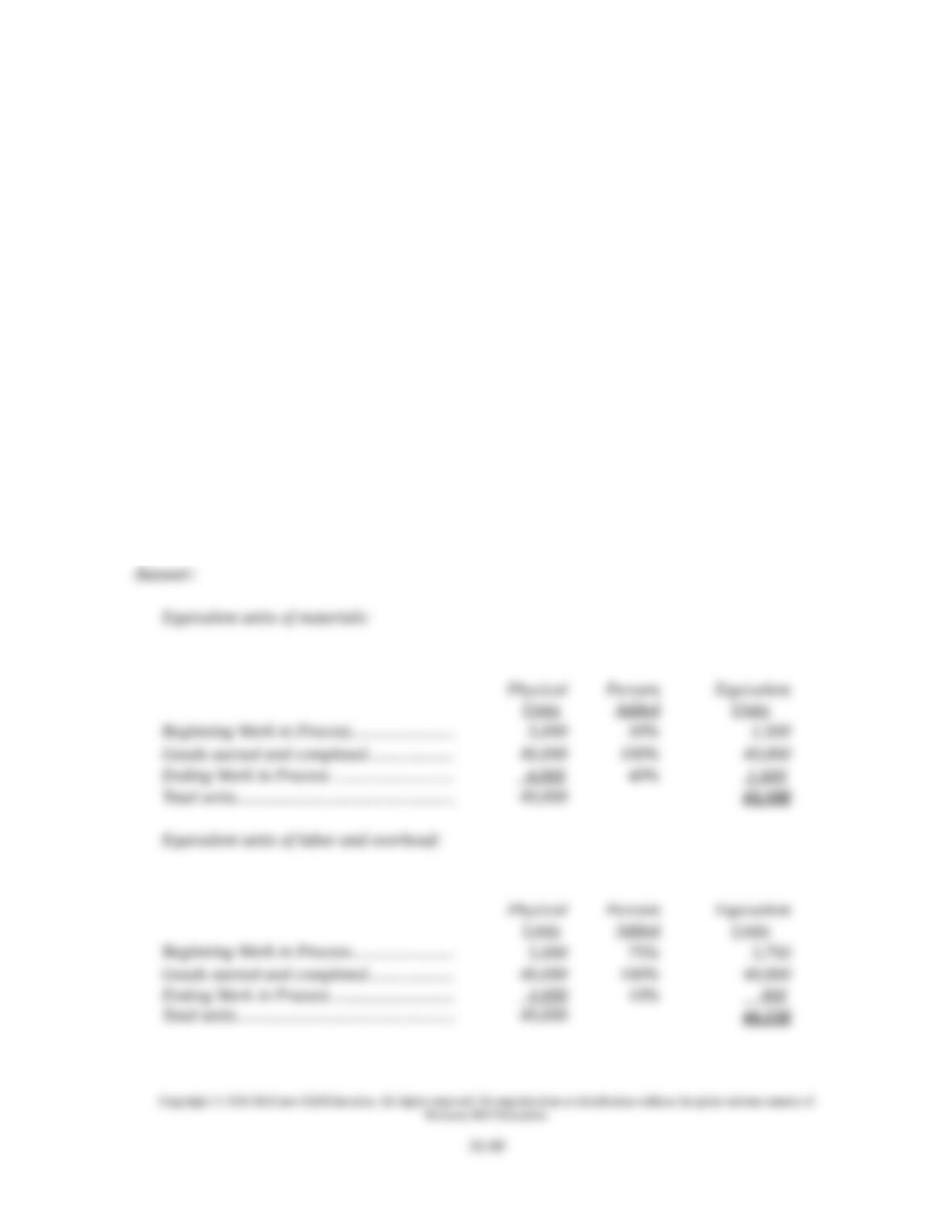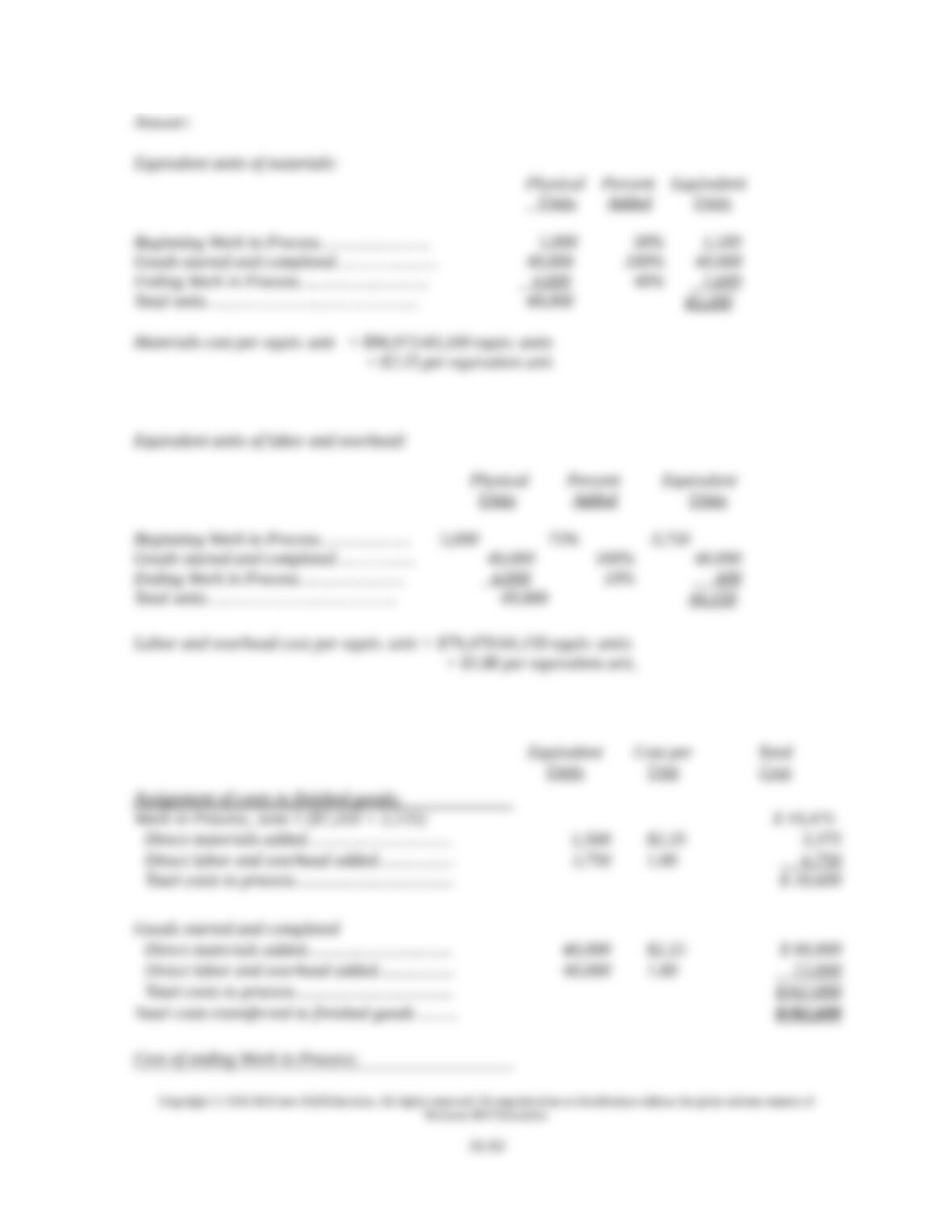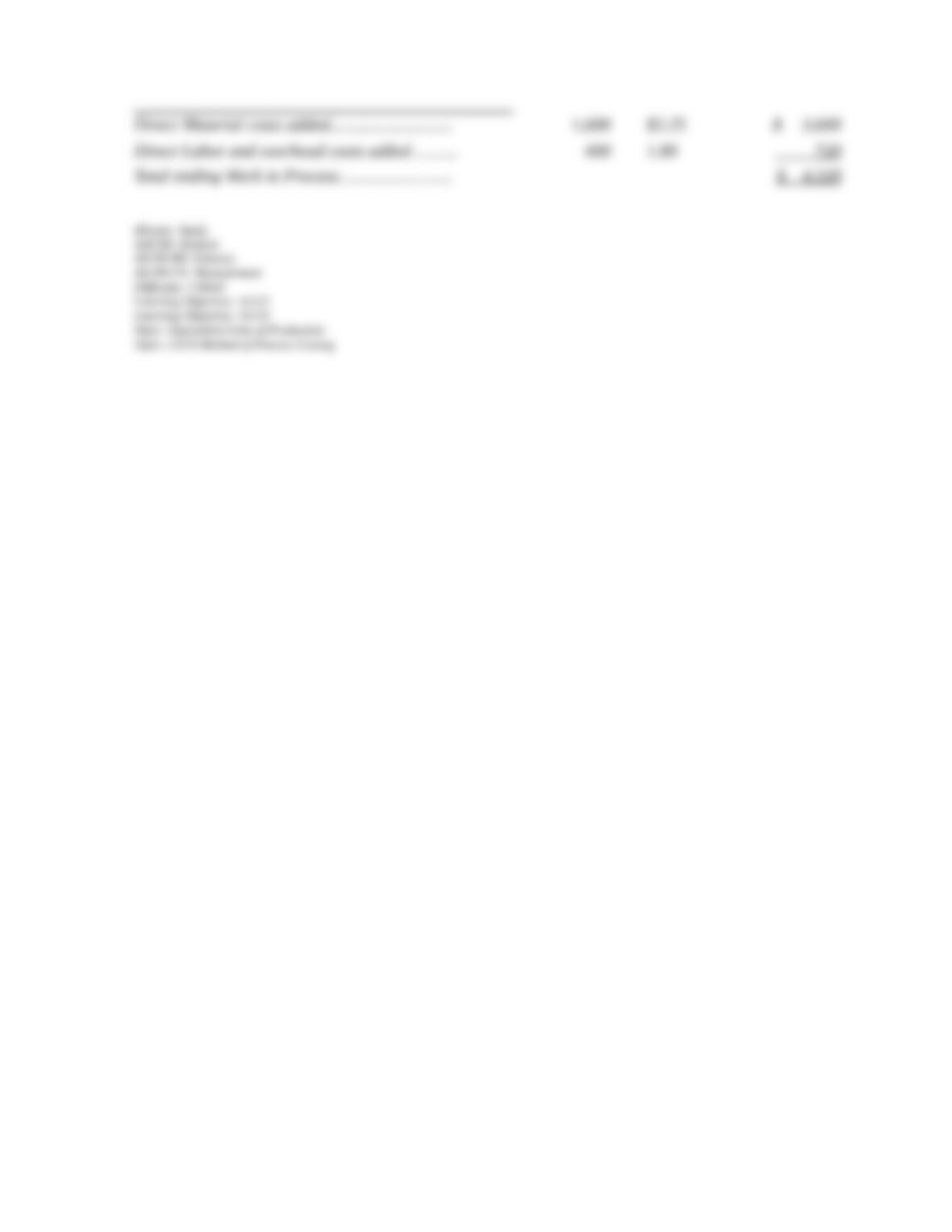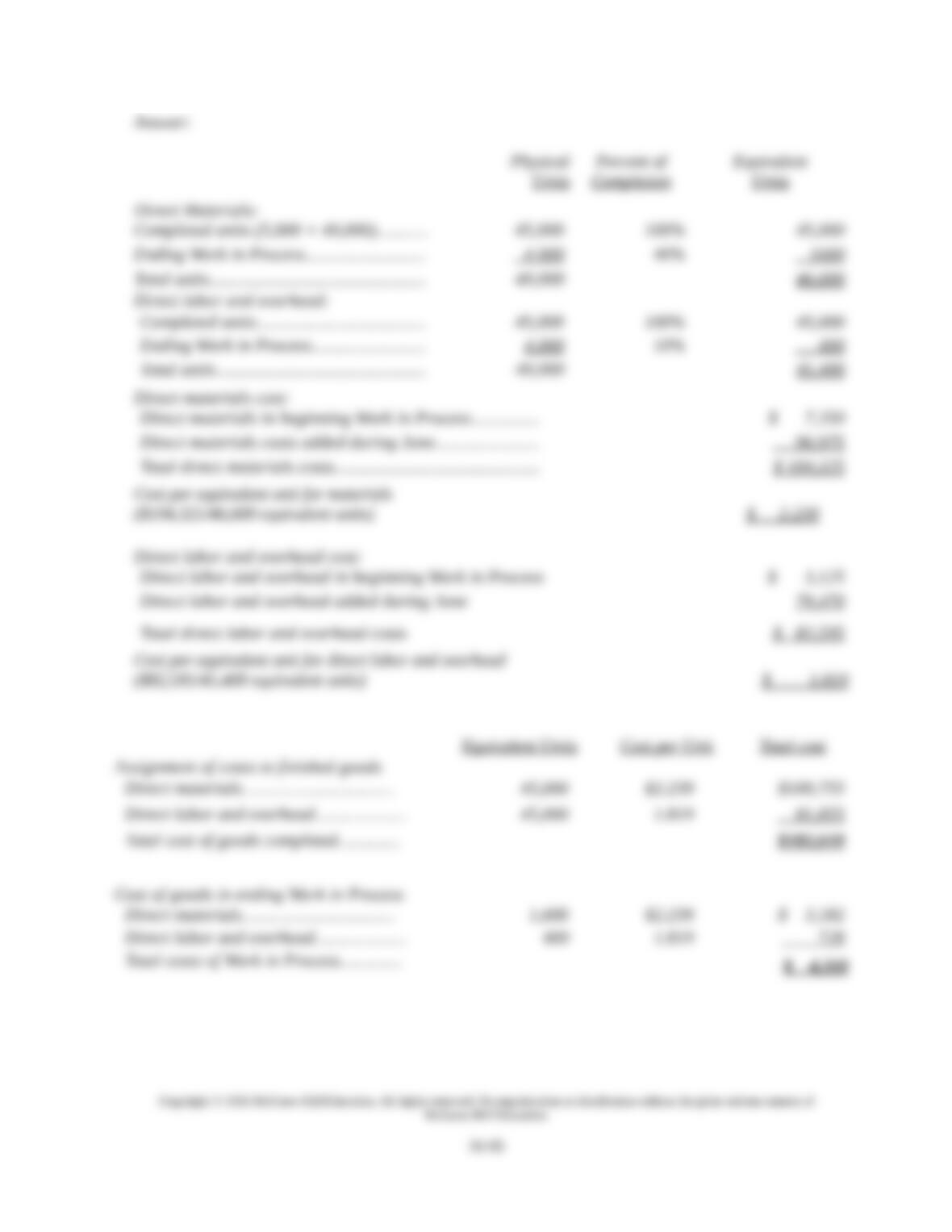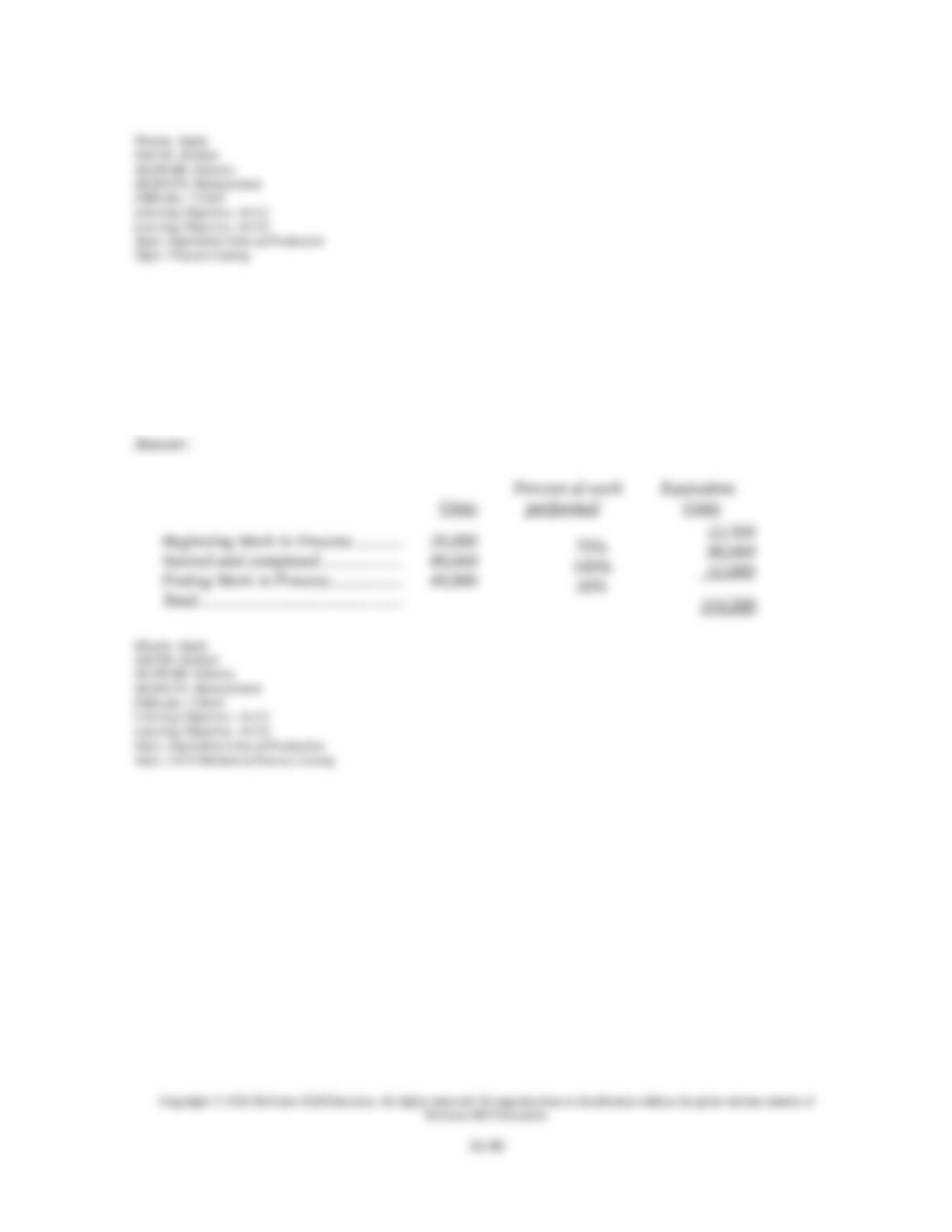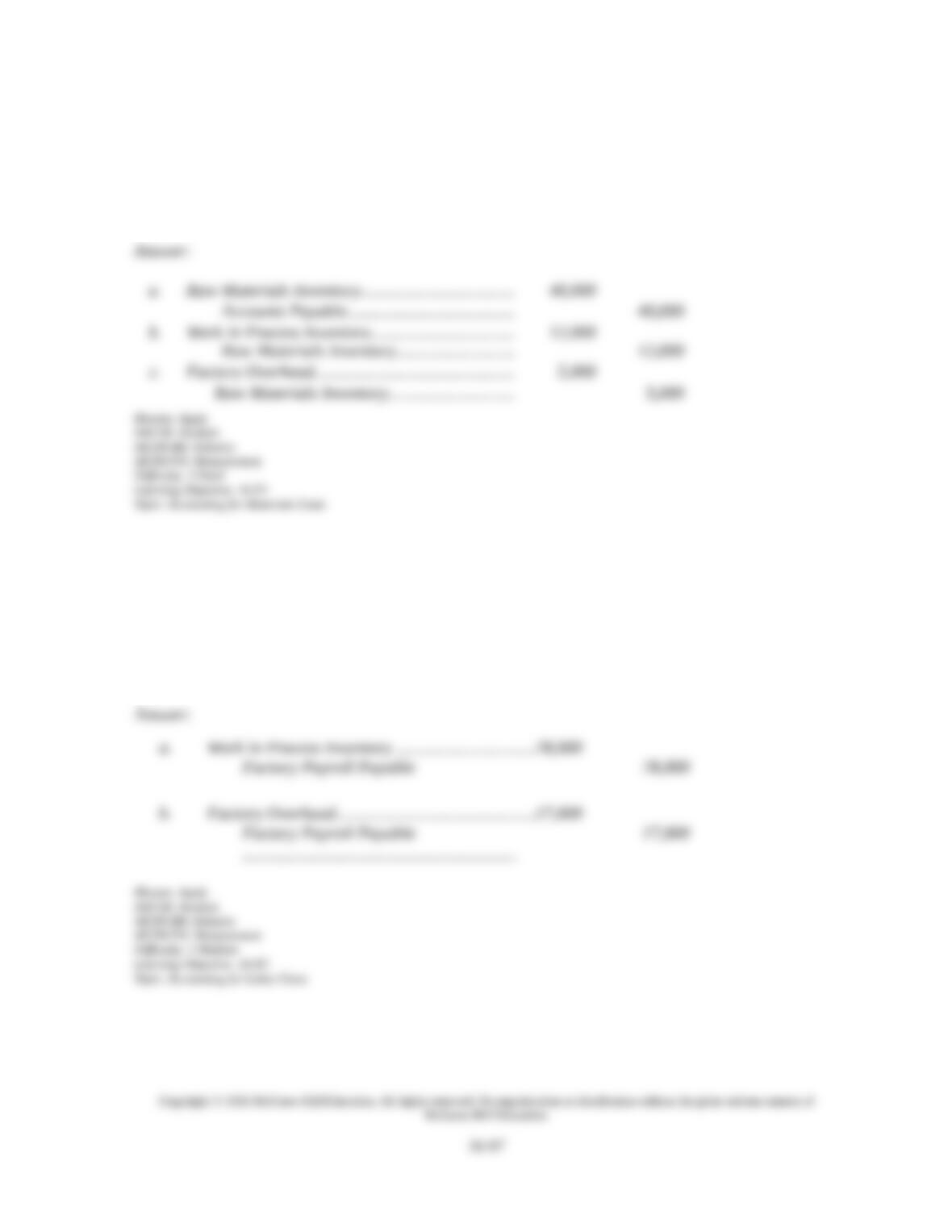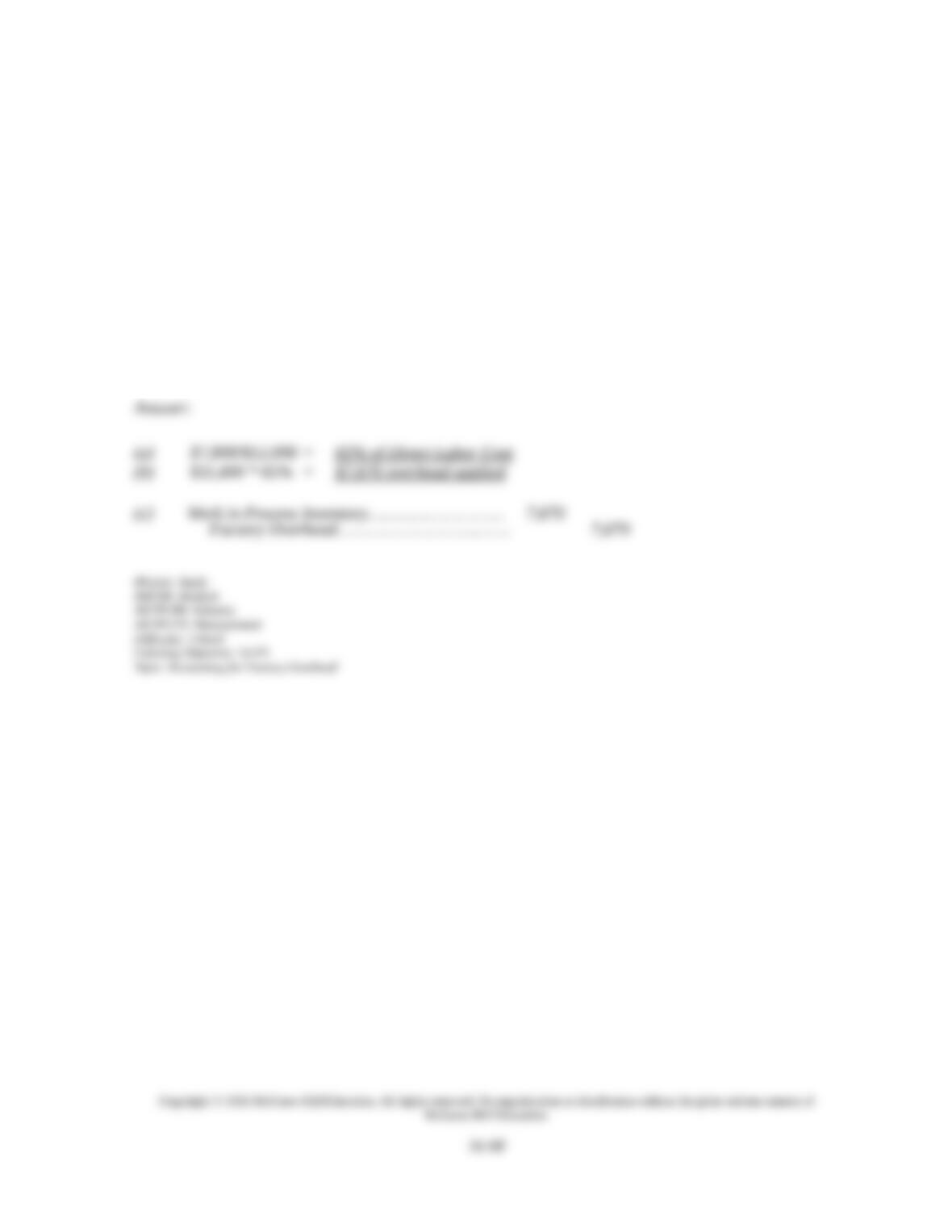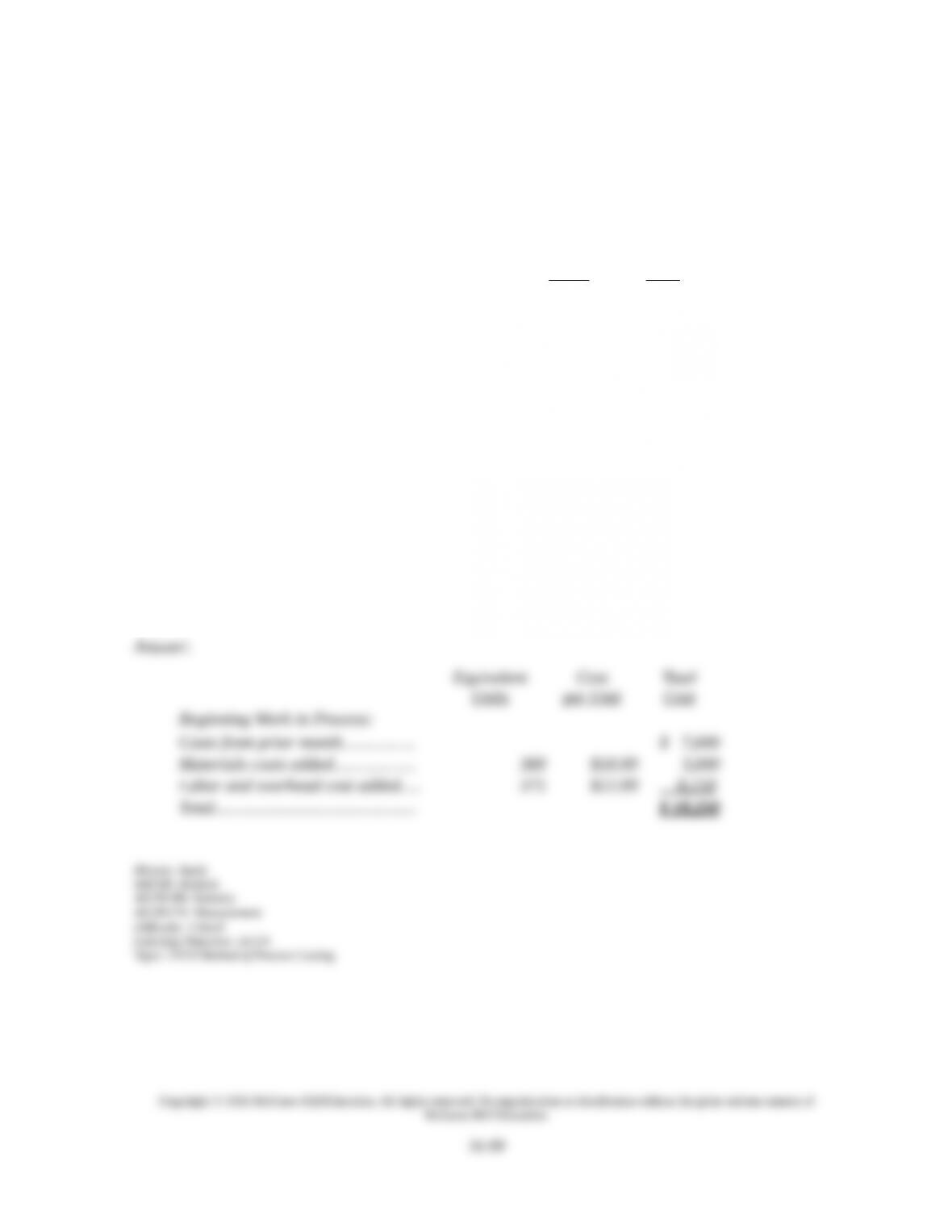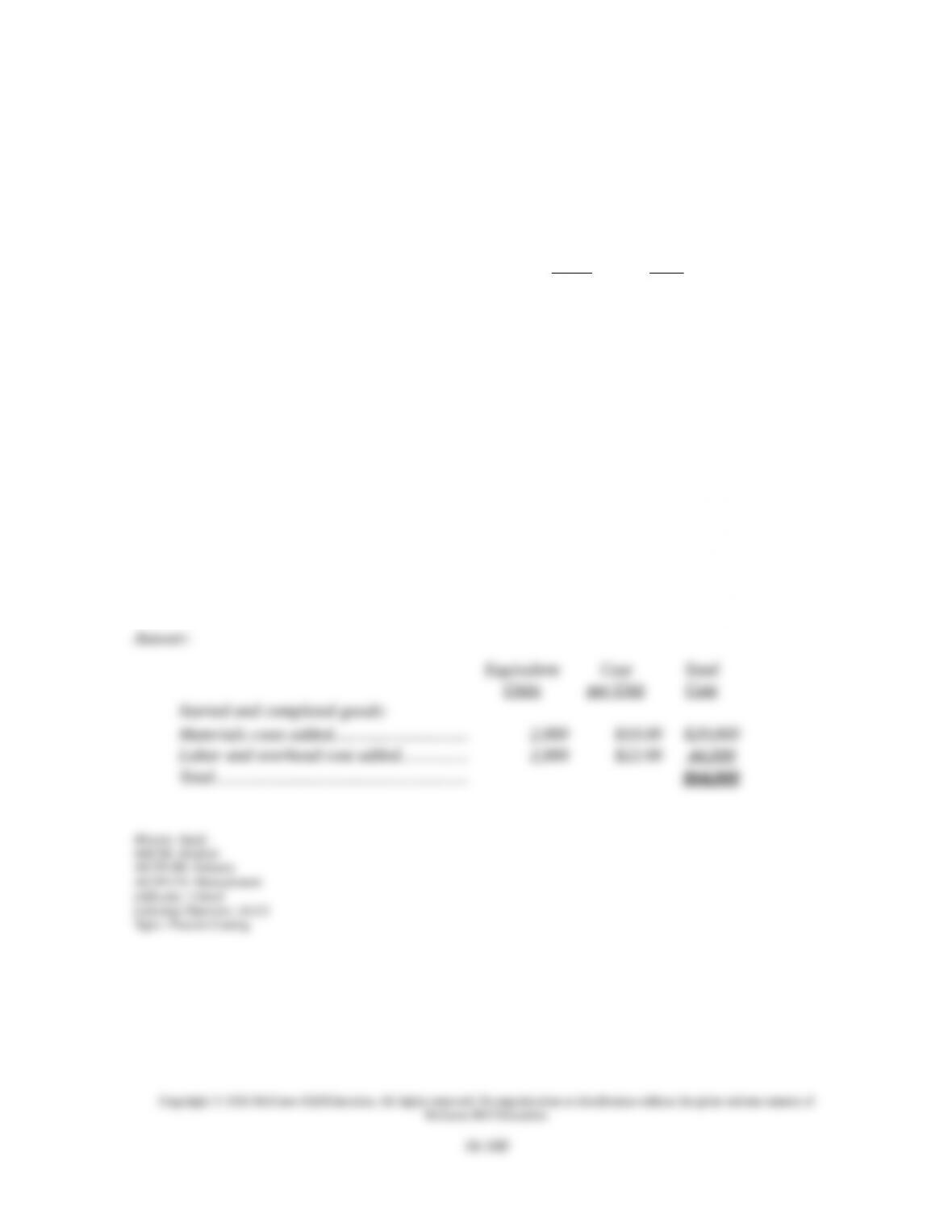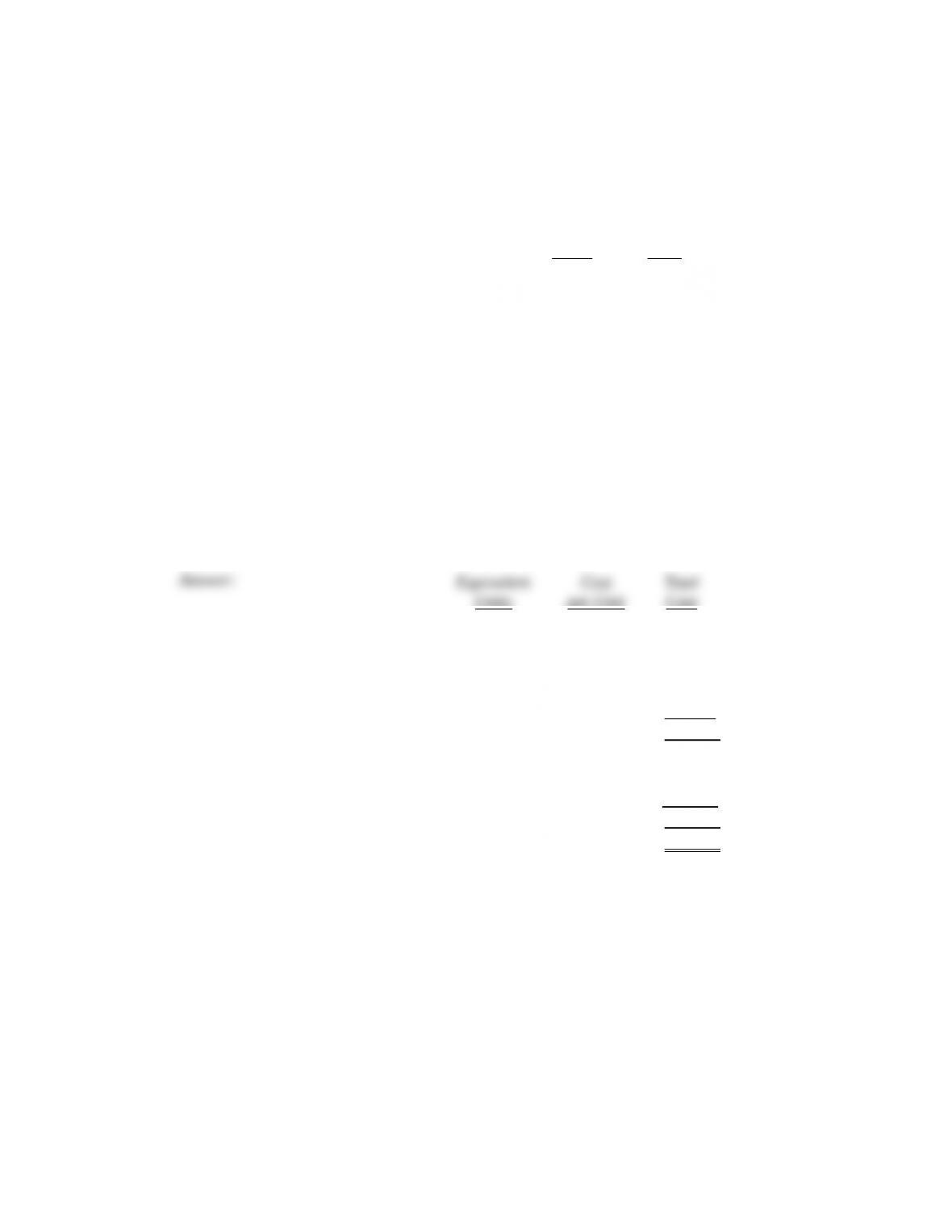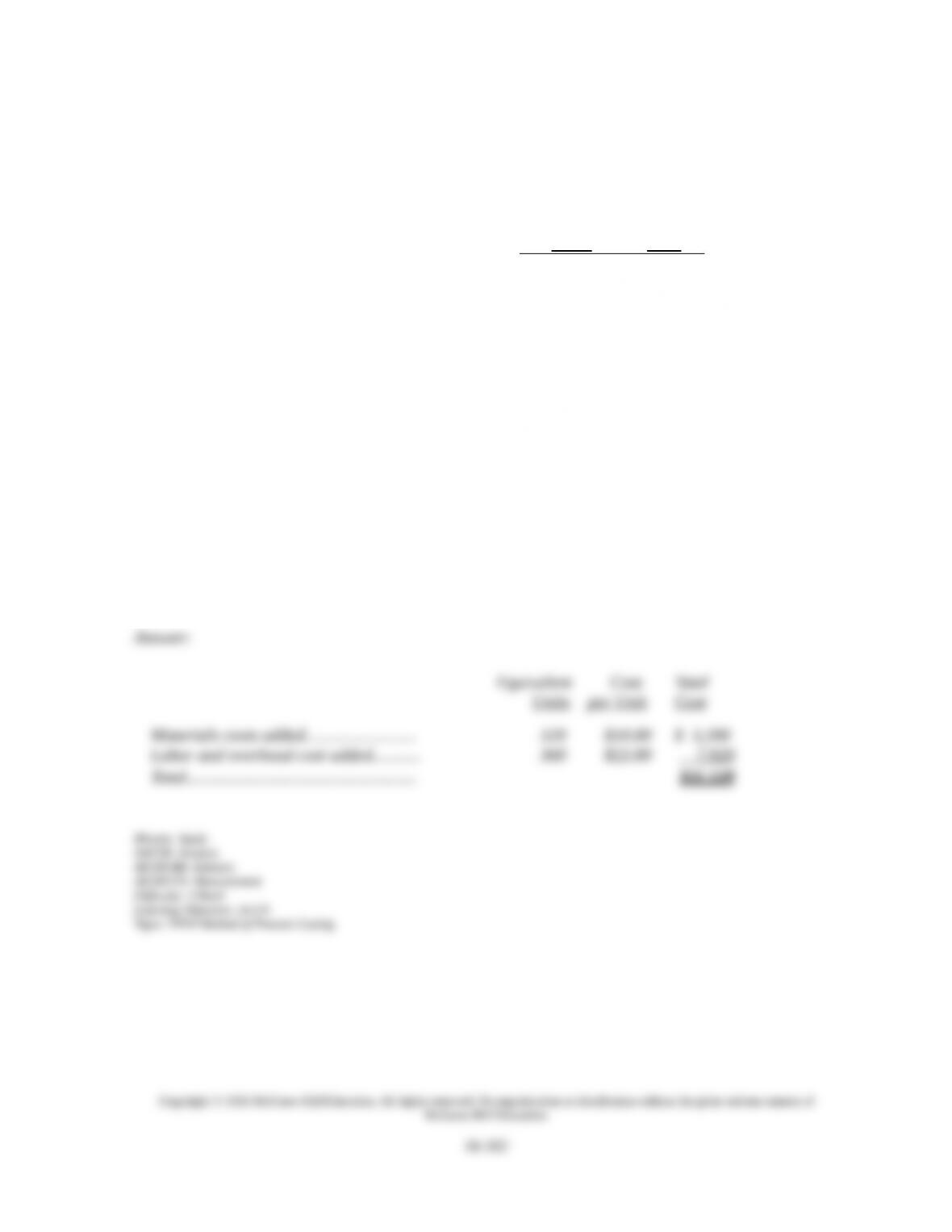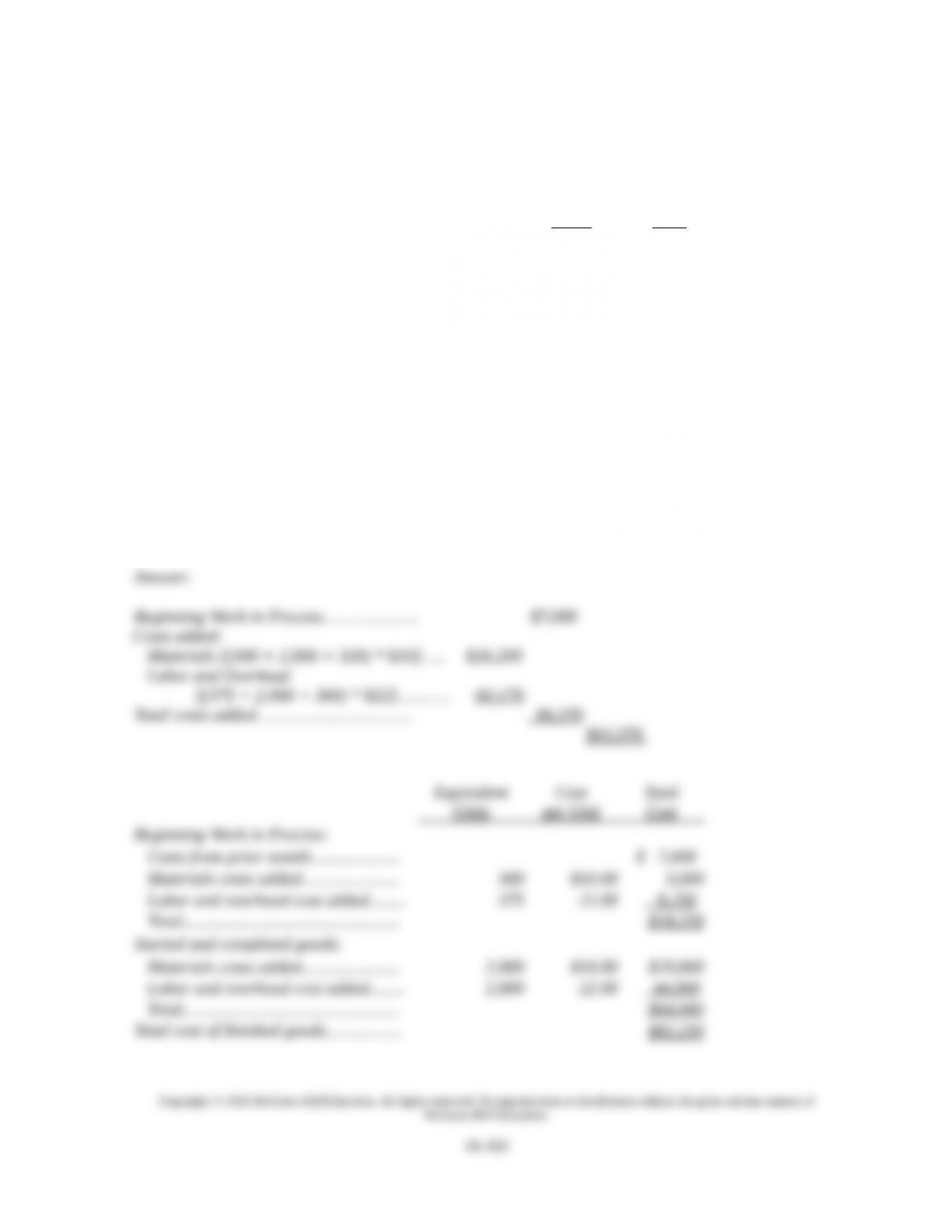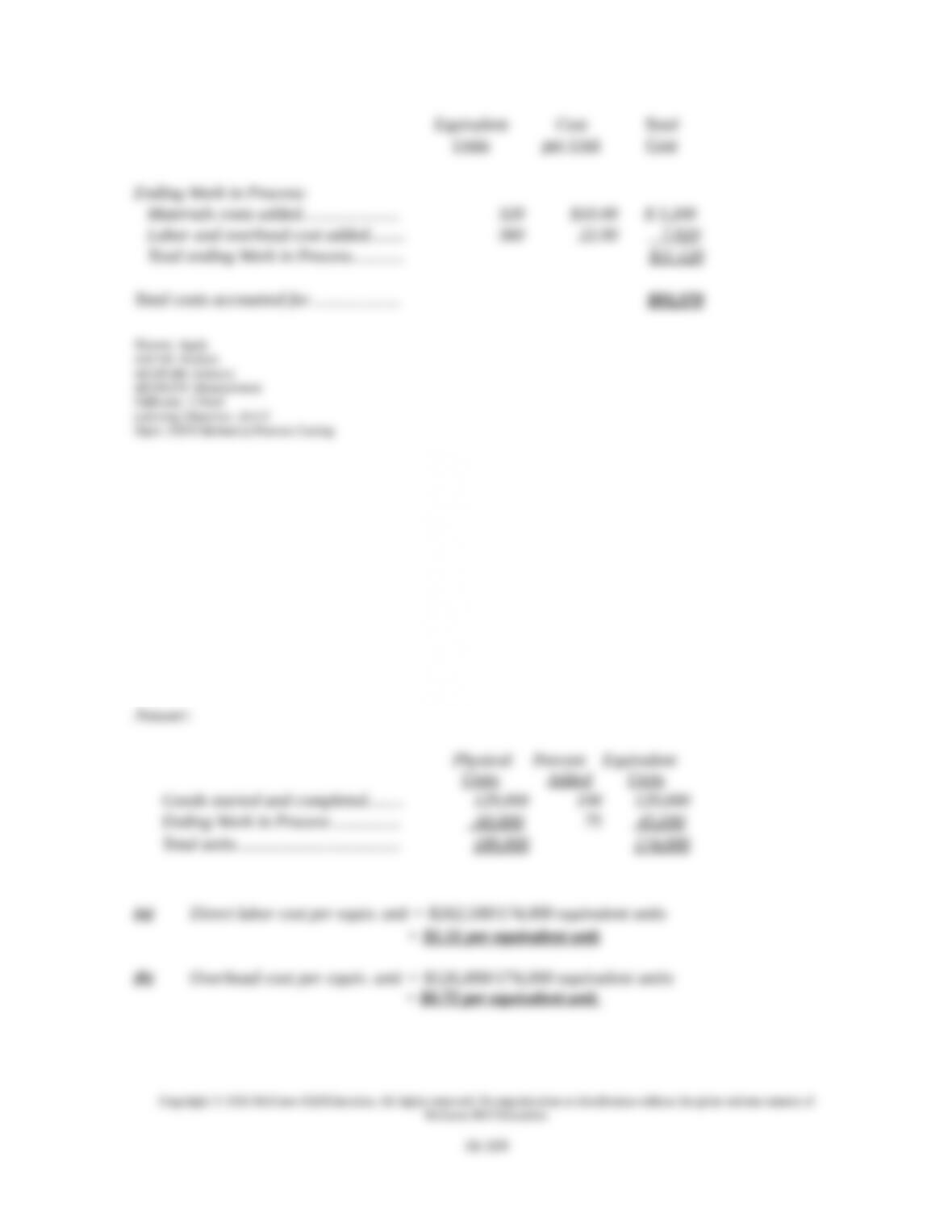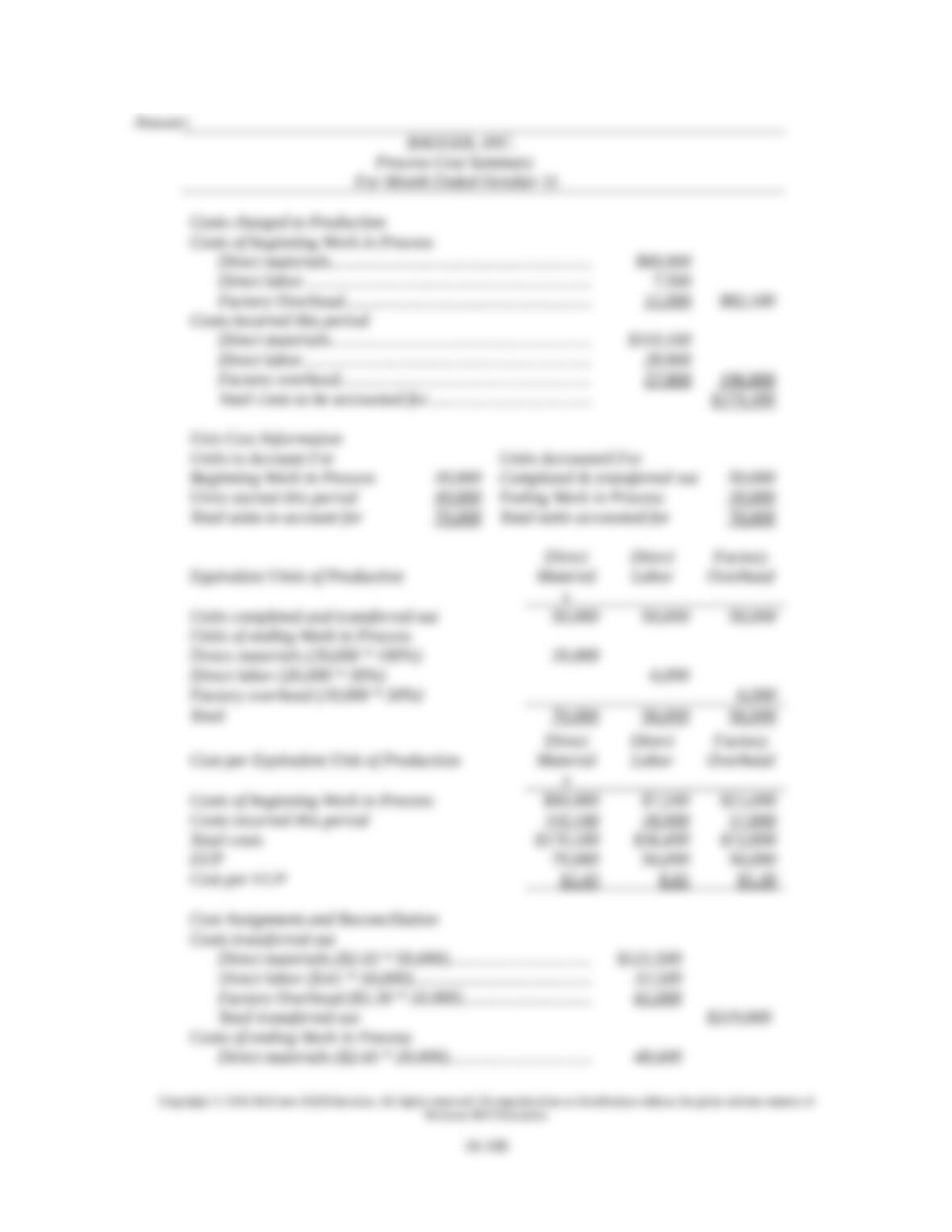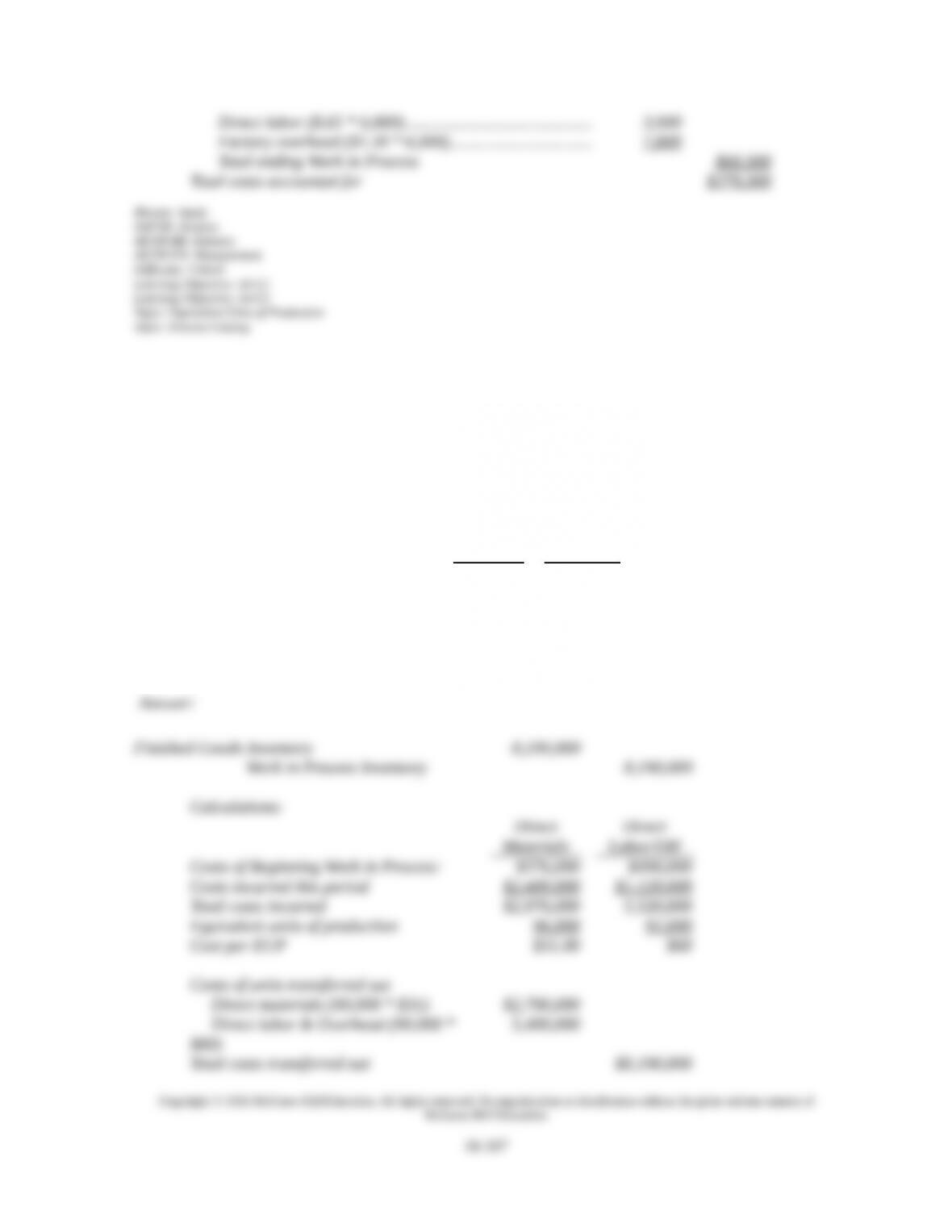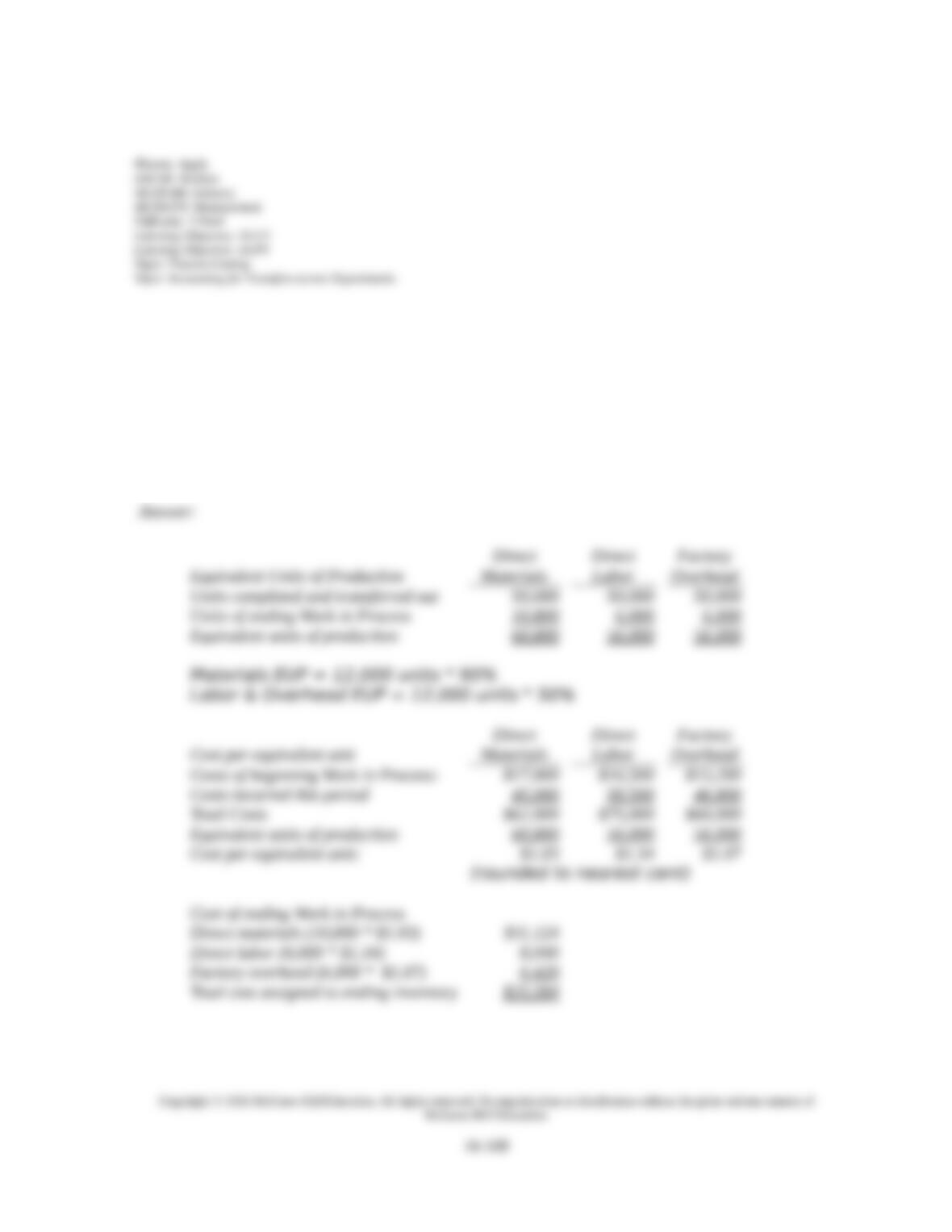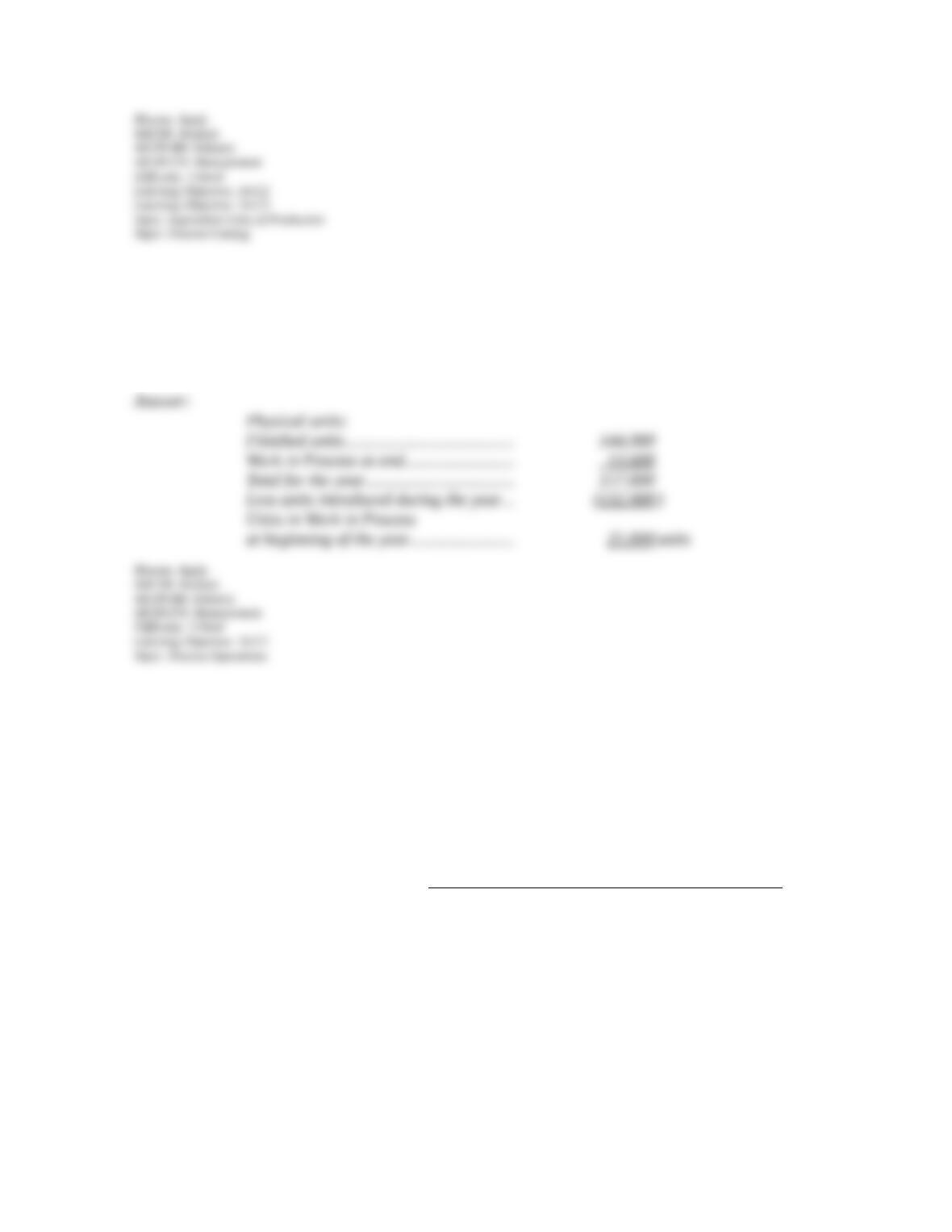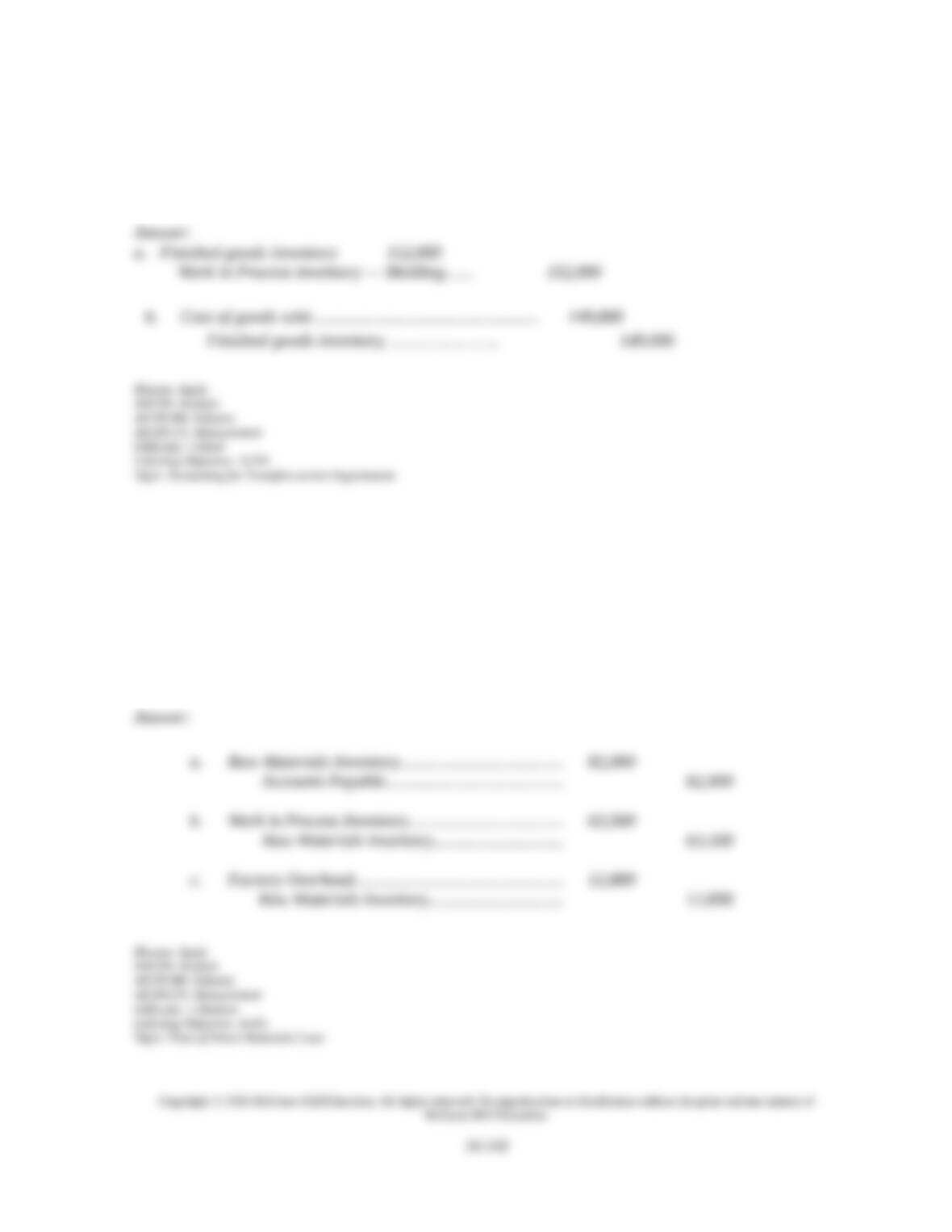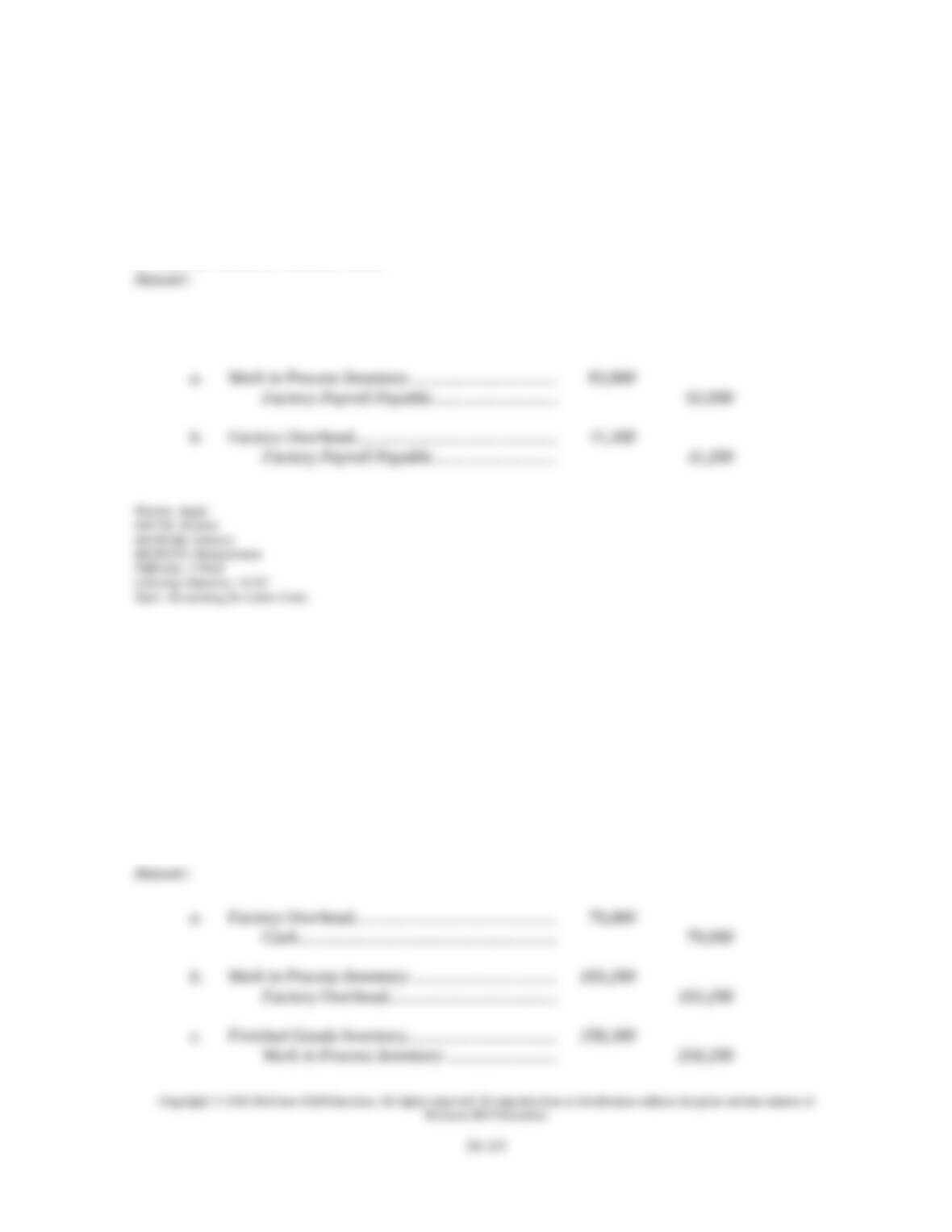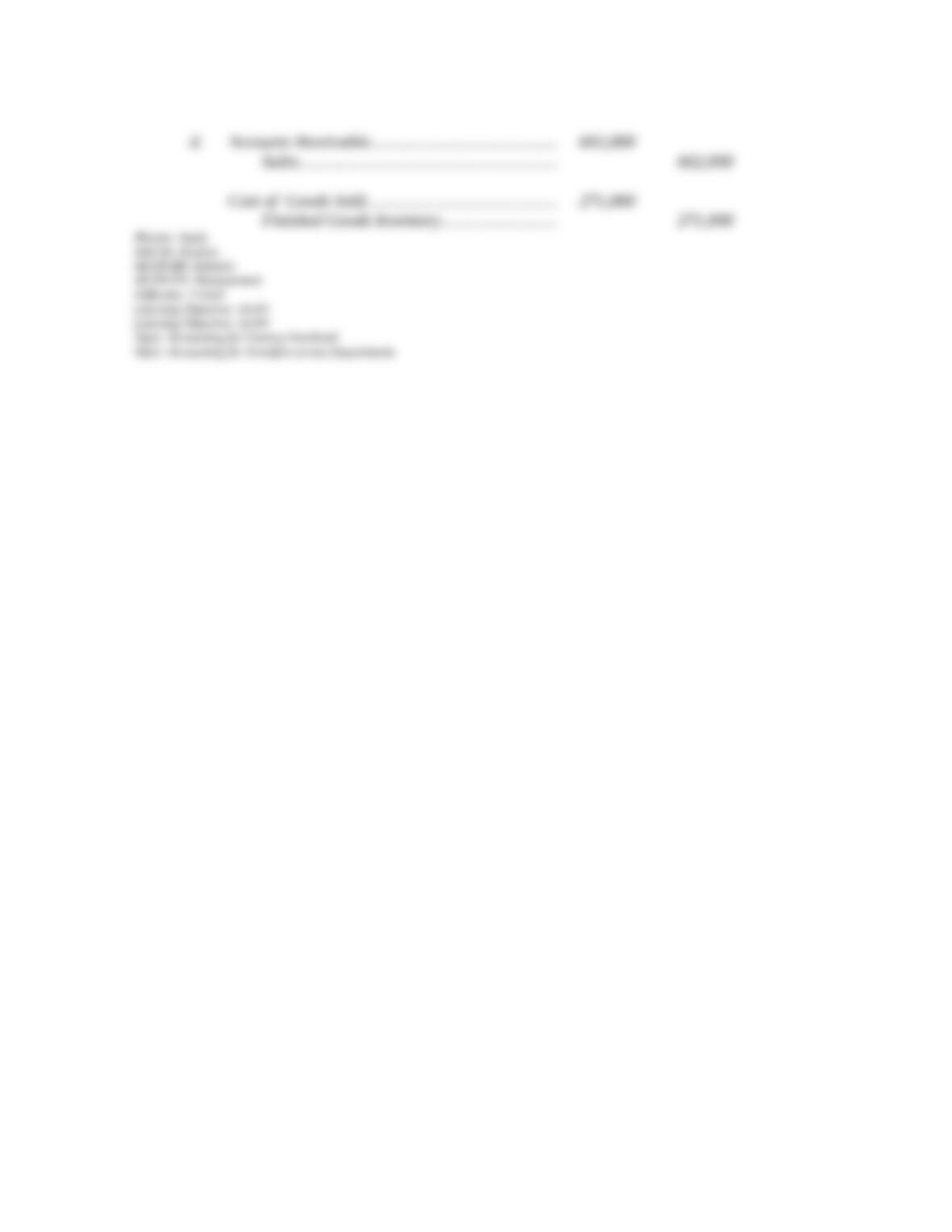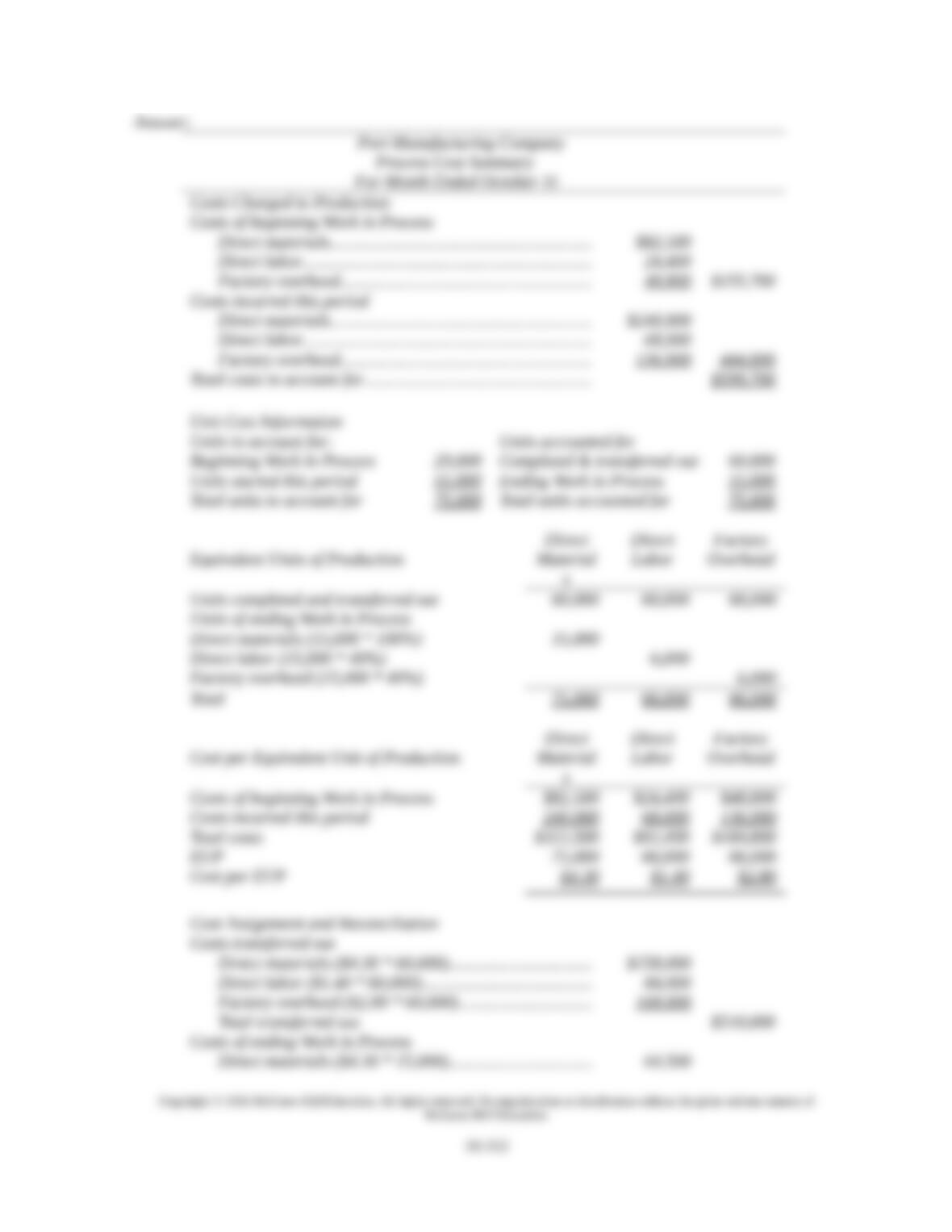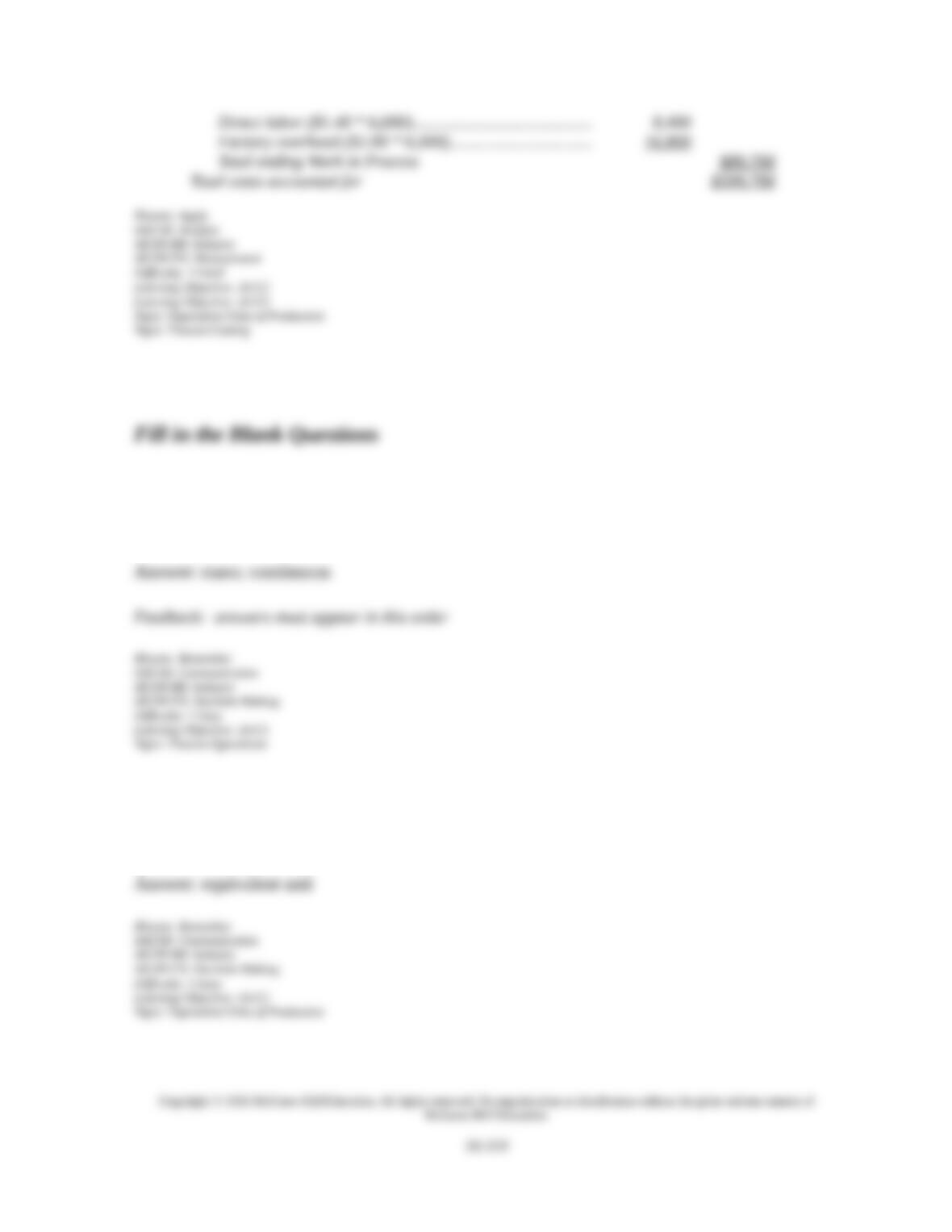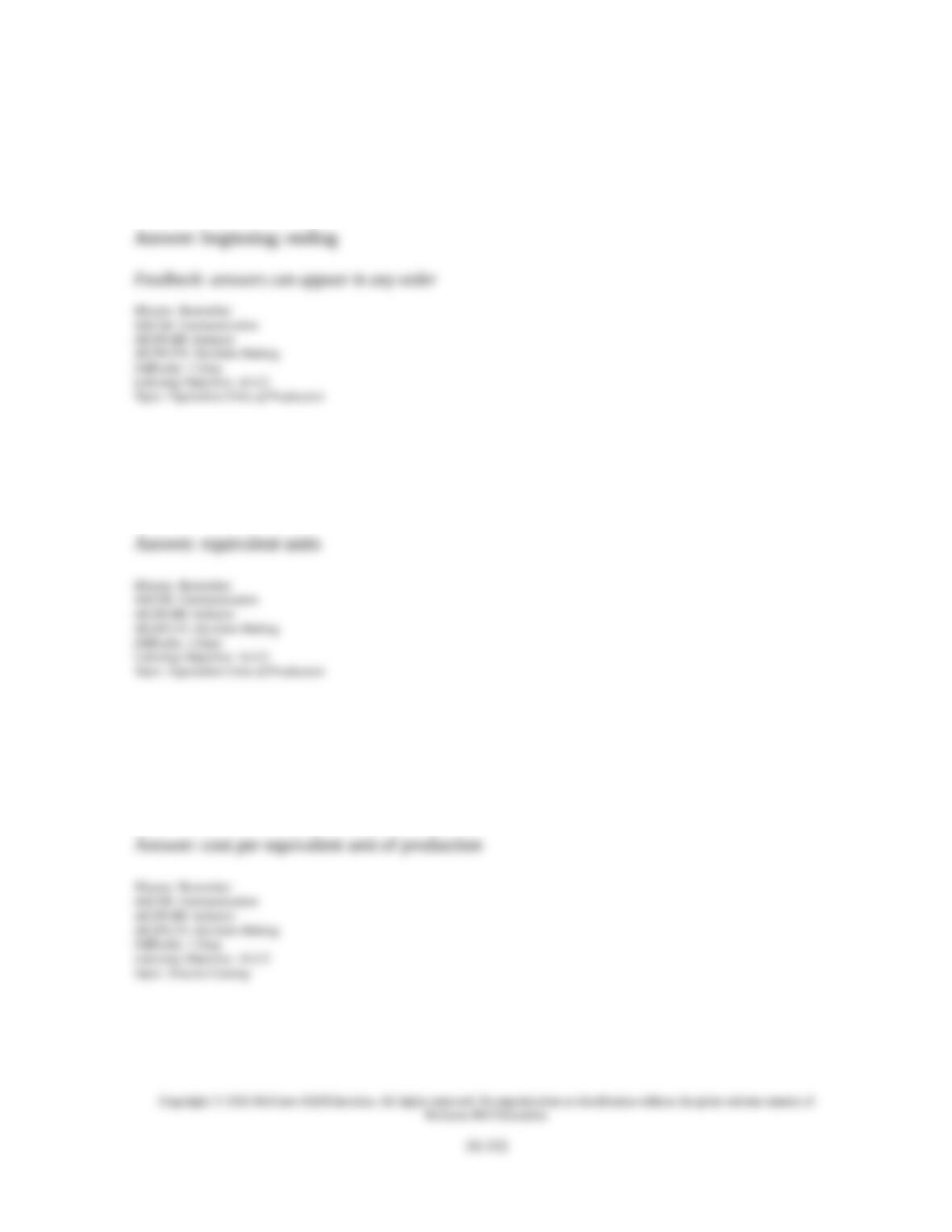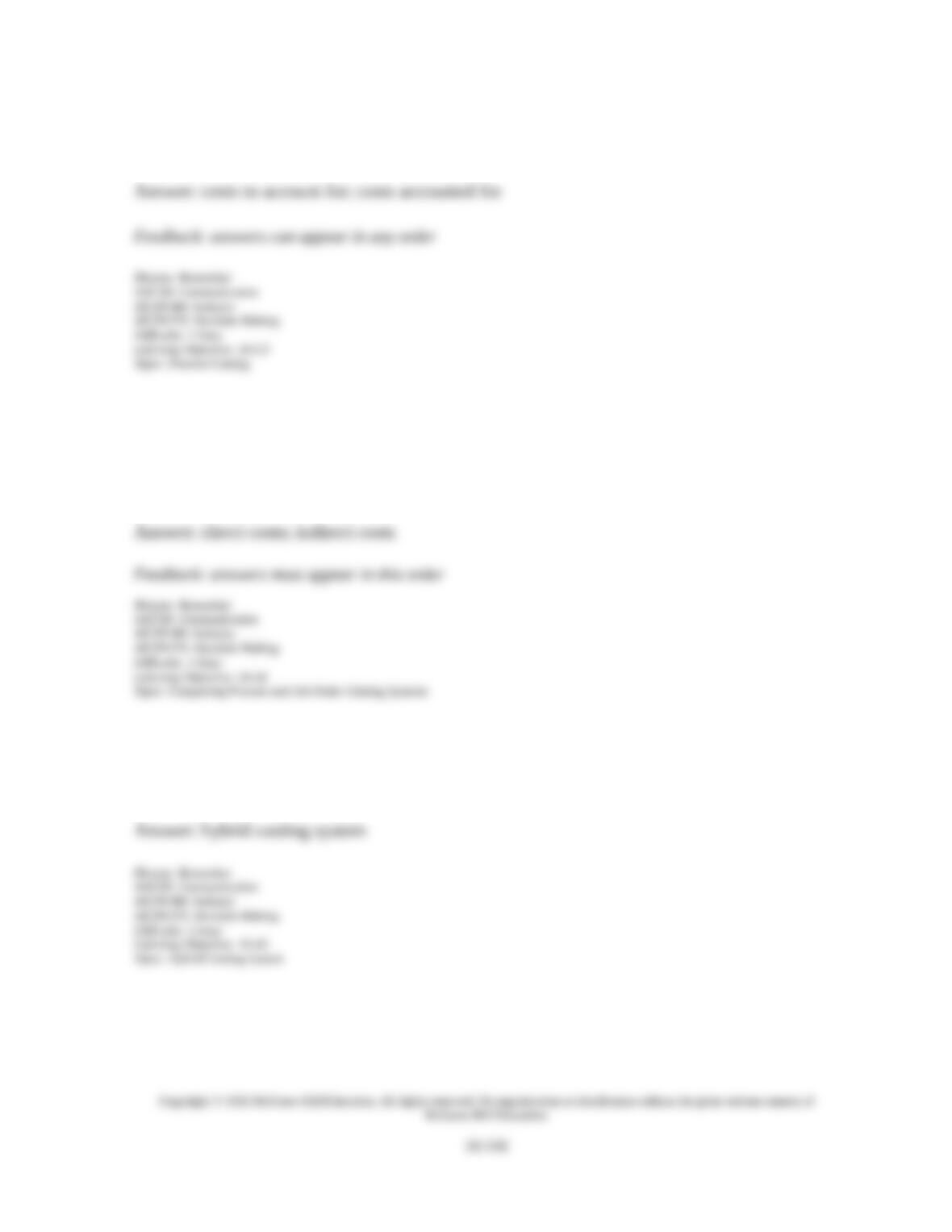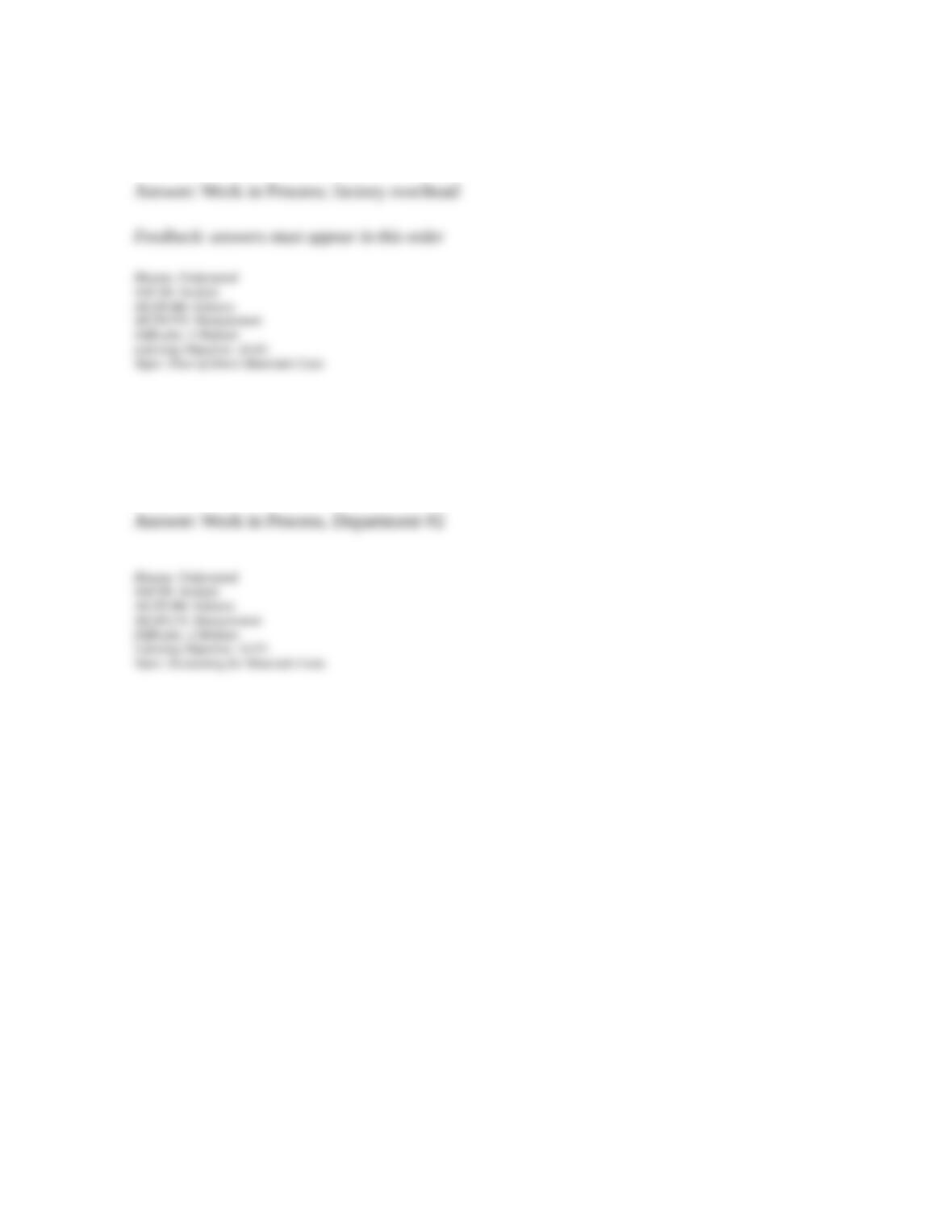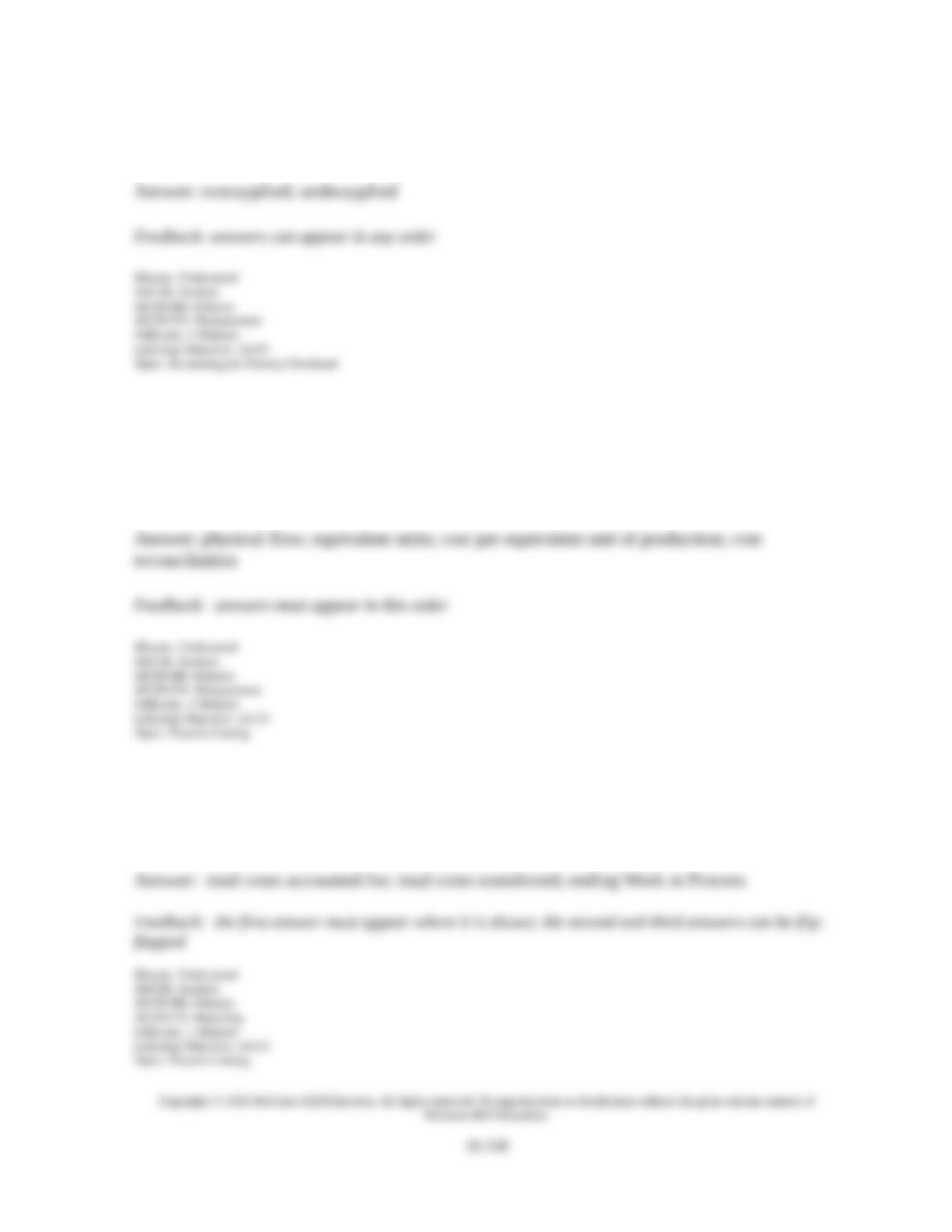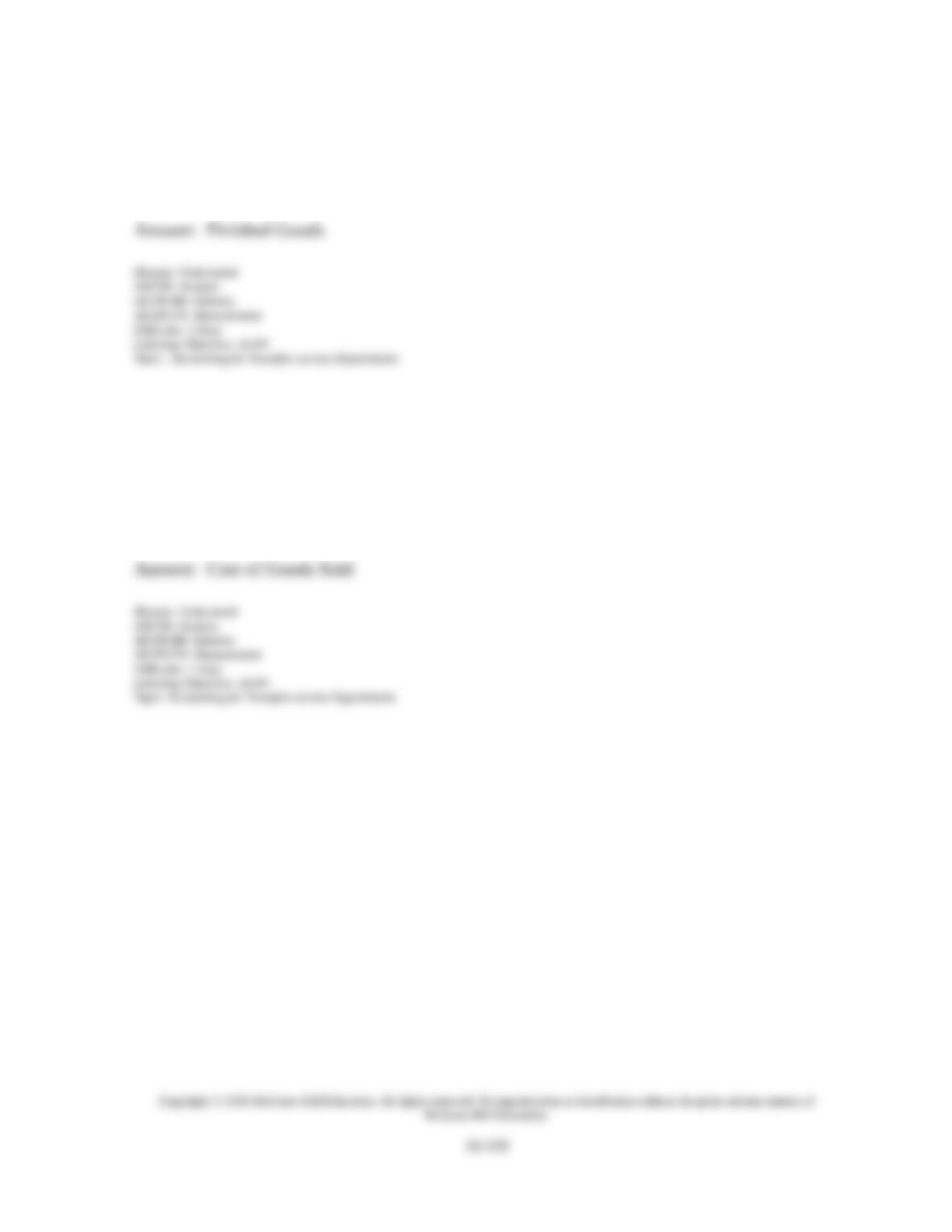117. Luker Corporation uses a process costing system. The company had $160,500 of
beginning Finished Goods Inventory on October 1. It transferred in $837,000 of goods
completed during the period. The ending Finished Goods Inventory balance on October 31
was $158,200. The entry to account for the cost of goods manufactured during October is:
A. Debit Cost of Goods Sold $837,000; credit Finished Goods Inventory $837,000.
B. Debit Cost of Goods Sold $839,300; credit Work in Process Inventory $839,300.
C. Debit Finished Goods Inventory $837,000; credit Work in Process Inventory $837,000.
D. Debit Finished Goods Inventory $158,200; credit Cost of Goods Sold $158,200.
E. Debit Cost of Goods Sold $839,300; credit Finished Goods Inventory $839,300.
118. Dazzle, Inc. produces beads for jewelry making use. The following information
summarizes production operations for June. The journal entry to record June production
activities for direct material usage is:
Direct materials used $87,000
Direct labor used 160,000
Predetermined overhead rate (based on direct labor) 155%
Goods transferred to finished goods 432,000
Cost of goods sold 444,000
Credit sales 810,000
A. Debit Raw Materials Inventory $87,000; credit Accounts Payable $87,000.
B. Debit Raw Materials Inventory $87,000; credit Finished Goods Inventory $87,000.
C. Debit Cost of Goods Sold $87,000; credit Finished Goods Inventory $87,000.
D. Debit Work in Process Inventory $87,000; credit Raw Materials Inventory $87,000.
E. Debit Work in Process Inventory $87,000; credit Cost of Goods Sold $87,000.

























































































